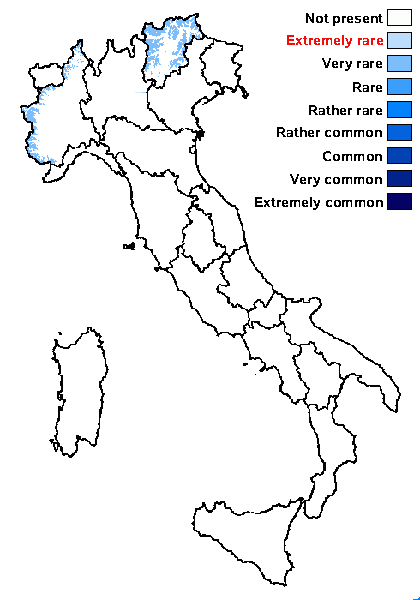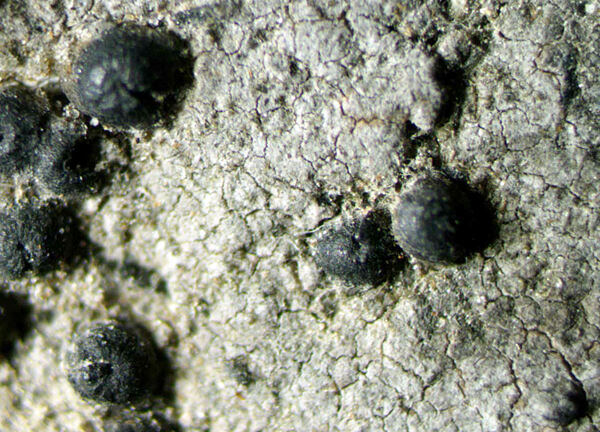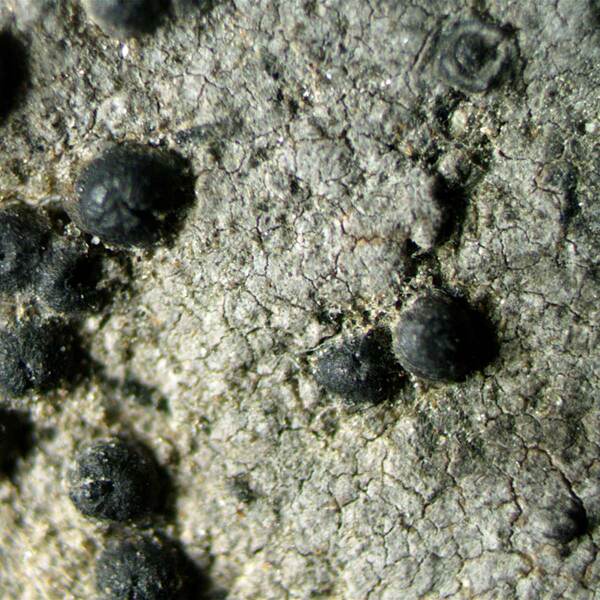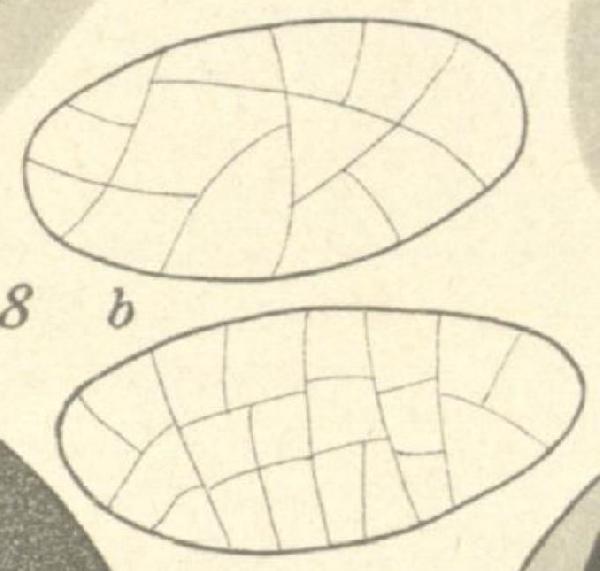Henrica melaspora (Taylor) Savić & Tibell
Nord. J. Bot., 26: 243, 2008. Basionym: Verrucaria melaspora Taylor in Hooker - London J. Bot., 6: 153, 1847.
Synonyms: Polyblastia melaspora (Taylor) Zahlbr.; Polyblastia plotocarpa Zschacke?; Polyblastia scotinospora (Nyl.) Hellb.; Polyblastia subinumbrata (Nyl.) A.L. Sm.; Polyblastia vallorcinensis (Croz.) Zschacke?
Distribution: N - TAA, Piem.
Description: Thallus crustose, endosubstratic or thinly episubstratic and rimose-areolate, white to dirty grey, sometimes with a brownish tinge, the areoles 0.3-0.6 mm wide, separated by narrow cracks. Thallus pseudoparenchymatous throughout, the outermost layer forming a thin, colourless pseudocortex of spherical cells; algal cells more or less distinctly arranged in vertical columns separated by strands of mycobiont cells. Perithecia black, 0.5-0.8 mm across, hemispherical to flattened, formed singly or in groups, the ostiolar region often depressed, the outer surface coarsely uneven in upper part, sometimes covered by a very thin thalline layer at the base. Involucrellum reaching down to the thallus, diverging towards the base, gradually thickened toward the base (120-140 µm thick), strongly carbonized; exciple 22-31 µm thick, brown, paraplectenchymatous; hamathecium of thin, c. 1.2 µm wide, sparingly branched pseudoparaphyses, interascal filaments absent; hymenial gel I+ red, K/I+ blue. Asci 8-spored, clavate, without apical thickening when mature. Ascospores muriform, with 5-7 transverse septa and 2-4 longitudinal septa in central part, at first hyaline but soon turning brown, ellipsoid, often slightly asymmetric and curved, 27-39 x 16-20 µm, the surface minutely punctate. Photobiont chlorococcoid. Spot tests: K-, C-, KC-, P-, UV-. Chemistry: without lichen substances. Note: on siliceous to somewhat calcareous, wet rocks in open situations, often on slate, usually along rivers or by lakeshores or on pebbles at least intermittently flushed with running water, near or above treeline.
Growth form: Crustose
Substrata: rocks
Photobiont: green algae other than Trentepohlia
Reproductive strategy: mainly sexual
Commonnes-rarity: (info)
Alpine belt: very rare
Subalpine belt: very rare
Oromediterranean belt: absent
Montane belt: absent
Submediterranean belt: absent
Padanian area: absent
Humid submediterranean belt: absent
Humid mediterranean belt: absent
Dry mediterranean belt: absent

Predictive model

http://fungi.myspecies.info/sites/fungi.myspecies.info/files/Polyblast%20mela4424c.jpg - Licence: CC BY-NC 3. Photo uploaded by Mark Powell

Source: http://fungi.myspecies.info/sites/fungi.myspecies.info/files/Polyblast%20mela4424c.jpg - Licence: CC BY-NC 3. Photo uploaded by Mark Powell

Source: Zschacke H. 1914. Die mitteleuropäsche Verrucariaceen. II. Hedwigia, 55: 286-324. Public Domain
26. P. subinumbrata Orig.: 4 Sporen.
Growth form: Crustose
Substrata: rocks
Photobiont: green algae other than Trentepohlia
Reproductive strategy: mainly sexual
Commonnes-rarity: (info)
Alpine belt: very rare
Subalpine belt: very rare
Oromediterranean belt: absent
Montane belt: absent
Submediterranean belt: absent
Padanian area: absent
Humid submediterranean belt: absent
Humid mediterranean belt: absent
Dry mediterranean belt: absent

Predictive model

http://fungi.myspecies.info/sites/fungi.myspecies.info/files/Polyblast%20mela4424c.jpg - Licence: CC BY-NC 3. Photo uploaded by Mark Powell

Source: http://fungi.myspecies.info/sites/fungi.myspecies.info/files/Polyblast%20mela4424c.jpg - Licence: CC BY-NC 3. Photo uploaded by Mark Powell

 INDEX FUNGORUM
INDEX FUNGORUM
 GBIF
GBIF
 DOLICHENS
DOLICHENS



